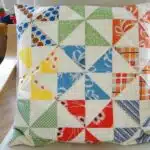As a furniture upholstery expert, I have noticed that many individuals opt for futons as a space-saving solution for their homes. While these versatile pieces of furniture can be both practical and stylish, they are notorious for their uncomfortable sleeping surfaces. As someone who values comfort and quality in home decor, I believe it is important to understand how to make a futon more comfortable.
In this article, we will explore various techniques and tips on how to improve the comfort level of your futon. From selecting the right type of mattress to adding layers of padding, there are several methods that can transform your futon into a cozy and inviting sleeping surface. By implementing these suggestions, you will not only enhance the comfort of your own living space but also provide a service to guests who may need a comfortable place to sleep.
Assessing Your Current Futon
When it comes to making your futon more comfortable, the first step is to assess the comfort level of your current futon. Begin by assessing how well you sleep on it and how it feels when you sit on it. Pay attention to any areas that are too soft or too firm, or if there is any sagging. It is also essential to measure your futon’s dimensions accurately, as this information will help you choose the right mattress type.
Measuring your futon’s dimensions is crucial because you need to ensure that the mattress fits well and provides proper support. Measure the width, length, and thickness of your current mattress to determine what size and type of mattress will work best for you. Keep in mind that different types of mattresses have varying thickness levels, so be sure to factor this into your measurements.
Once you have assessed the comfort level of your futon and measured its dimensions accurately, you can move on to choosing the right mattress type. This decision will depend on several factors such as personal preference, budget, and whether you want a traditional or modern look for your room. With these factors in mind, let’s take a closer look at some of the most popular mattress types available for futons.
Choosing The Right Mattress Type
As the saying goes, “a good night’s sleep is priceless.” And if you’re someone who loves to lounge on your futon, it’s essential that you make it as comfortable as possible. One of the best ways to do this is by choosing the right mattress type. However, with so many options available in the market today, it can be challenging to determine which one will work best for you.
To help you make an informed decision, here are three mattress types that can significantly improve the comfort level of your futon:
Memory Foam – This type of mattress conforms to your body shape and provides excellent support for your back and neck. It also helps reduce pressure points, making it an excellent choice for people with joint pain or arthritis.
Latex – Latex mattresses are known for their durability and firmness. They provide excellent support while still being comfortable enough for long periods of sitting or sleeping. Additionally, latex is hypoallergenic and resistant to dust mites and other allergens.
Innerspring – If you prefer a more traditional feel, an innerspring mattress may be a good option for your futon. These mattresses have a coil system that provides support while also allowing for breathability and airflow.
When choosing the ideal mattress type, it’s essential to consider the pros and cons carefully. While memory foam offers great support and comfort, it may retain heat, which could be uncomfortable during hotter months. On the other hand, latex mattresses are durable but may not offer as much contouring as memory foam.
Determining the ideal thickness for your futon’s new mattress is also essential in providing maximum comfort. In the next section, we’ll discuss how to choose the appropriate thickness based on your preferences and needs so that you can enjoy relaxing on your futon without any discomfort or pain in your body!
Determining The Ideal Thickness For The Mattress
One of the most important factors in making a futon more comfortable is choosing the right thickness for the mattress. When selecting a mattress, it’s essential to consider both comfort and support. The ideal thickness will depend on your personal preferences and needs.
Memory foam and latex foam are two popular materials used in futon mattresses. Memory foam molds to your body shape, providing excellent support while reducing pressure points. Latex foam is also known for its supportive qualities, but it has more bounce than memory foam. Both types of foam come in varying levels of firmness and softness, allowing you to choose one that suits your preferences.
When determining the ideal thickness for your futon mattress, consider how you plan to use it. If you’ll be using it primarily as a sofa, a thinner mattress may be sufficient. However, if you plan to sleep on it regularly or have guests over frequently, a thicker mattress may be necessary. Generally speaking, mattresses between six and eight inches thick provide adequate support and comfort for most people.
Transition: Now that you’ve determined the ideal thickness for your futon mattress let’s explore another way of making it even more comfortable – adding a mattress topper.
Adding A Mattress Topper
- Adding a mattress topper to a futon can provide a great benefit for comfort and support.
- There are a variety of mattress topper types that can be used, from memory foam to polyester filled.
- Memory foam toppers offer the most support and provide pressure relief, while polyester toppers are softer and more affordable.
- Toppers are also beneficial as they allow for easier cleaning and can be replaced if needed, making them a viable option for a futon mattress upgrade.
Mattress Topper Types
As someone who has helped many customers improve their futon comfort level, I can say that adding a mattress topper is a popular solution. However, there are different types of mattress toppers available in the market, and choosing the right one can be overwhelming. Two popular options are foam and down.
Foam mattress toppers are made from materials such as memory foam or latex. They provide excellent support to your body by conforming to its shape. Foam toppers come in different thicknesses, densities, and firmness levels, making it easier for you to find the perfect fit for your needs. On the other hand, down mattress toppers offer a softer feel and more luxurious sleeping experience. They are filled with feathers or synthetic fibers and often come with a quilted top layer for added comfort.
It’s important not to confuse a mattress pad with a mattress topper; they serve different purposes. While a pad is thinner and designed primarily for protection against spills and stains, a topper is thicker and provides extra cushioning on top of your existing futon mattress. Ultimately, whether you choose foam or down depends on personal preference and what works best for your body type and sleeping habits. Investing in a high-quality mattress topper will ensure that you get the most out of your futon comfort-wise.
Benefits Of Toppers
When it comes to enhancing the comfort of a futon, adding a mattress topper is an effective solution. Mattress toppers come in various types, each with its own unique benefits. In this subtopic, we will discuss the advantages of using mattress toppers on your futon.
One significant benefit of using a mattress topper is that it can improve the overall comfort level of your futon. Toppers are designed to provide additional cushioning and support, allowing you to sleep more soundly and wake up feeling refreshed. They can also help alleviate pressure points and reduce discomfort caused by a too-firm or too-soft futon.
Another advantage of using a mattress topper is that it can extend the lifespan of your futon. By adding extra padding on top, you’ll protect your existing mattress from wear and tear caused by regular use. Additionally, some types of mattress toppers are washable, making them easy to maintain and keep clean over time.
In conclusion, investing in a high-quality mattress topper for your futon can have numerous benefits. Whether you choose foam or down, adding a topper can improve comfort levels while extending the life of your futon. Ultimately, choosing the right type of topper depends on personal preference and what works best for your body type and sleeping habits.
Using A Body Pillow For Support
As a furniture upholstery expert, I have seen people struggle with the discomfort of their futons. One solution that has worked for many is using a body pillow for support. A body pillow is a long, cylindrical cushion that can provide comfort and support throughout the night.
Body pillow benefits are numerous, and they can make a significant difference in your sleeping experience on a futon. These pillows help to alleviate pressure points by contouring to your body’s shape and providing additional support where you need it most. They can also help align your spine while you sleep, reducing back pain and stiffness.
When it comes to choosing the right size for your body pillow, there are a few things to consider. The ideal size will depend on your height and sleeping position. If you’re taller, you may want to opt for a longer pillow than someone who is shorter. Additionally, if you sleep on your side, you’ll want a thicker pillow than someone who sleeps on their back or stomach. Finding the right size will ensure maximum comfort and support throughout the night.
Investing in quality bedding is crucial for getting a good night’s sleep, especially when sleeping on a futon. In the next section, we’ll discuss how investing in high-quality sheets and blankets can make all the difference in creating an inviting and comfortable sleeping environment.
Investing In Quality Bedding
Choosing the Right Bedding is a crucial factor in enhancing the comfort of your futon. Investing in quality bedding can drastically improve your sleeping experience, making it more enjoyable and relaxing. You don’t want to skimp on bedding as it can make all the difference in how you feel when you wake up each morning.
One of the essential things to consider when choosing bedding for your futon is the Importance of Thread Count. The thread count refers to the number of threads woven into one square inch of fabric. The higher the thread count, the softer and more comfortable the material will be. A high-quality cotton sheet with a thread count between 300 and 500 is an excellent choice for your futon.
Investing in quality pillows, comforters, and blankets can also help enhance your futon’s comfort level. A supportive pillow that cradles your neck and head can prevent stiffness and soreness, while a warm comforter provides cozy insulation against cold weather. Layering with blankets and throws made from natural materials like wool or down feathers adds another layer of softness and warmth to complete the ultimate sleeping experience.
As an expert in furniture upholstery, I recommend investing in high-quality bedding as it offers numerous benefits to enhance your futon’s comfort level. With proper care and maintenance, quality bedding lasts longer than cheaper alternatives, saving you money in the long run. Additionally, having comfortable bedding can improve your overall well-being by providing better sleep quality, which translates to better health outcomes over time. In our next section, we will discuss layering with blankets and throws to add extra warmth and texture to your futon without compromising its durability or aesthetic appeal.
Layering With Blankets And Throws
Investing in quality bedding is an essential step towards making your futon more comfortable. However, even with the best bedding, some futons can still feel too firm or uncomfortable. Fortunately, there are several layering techniques you can employ to make your futon more comfortable.
Layering with blankets and throws is a simple yet effective way of adding comfort to your futon. Soft, high-quality blankets and throws provide extra cushioning and warmth while also creating a cozy atmosphere. When layering blankets and throws, it’s important to consider color coordination. Choose colors that complement each other and the rest of your decor.
To achieve optimal comfort, it’s recommended to use at least two layers of blankets or throws on top of your fitted sheet. You can start by layering a lightweight blanket or throw followed by a heavier one for added warmth and softness. It’s also essential to tuck in the edges of your layers neatly for a polished look. With these layering techniques, you can transform your futon into a comfortable sleeping surface that feels like a luxurious bed.
Incorporating decorative pillows is another layering technique that adds both comfort and style to your futon. Pillows filled with feather or down create an ultra-soft surface, while decorative pillows add visual interest and personality to the space. When choosing decorative pillows, consider different shapes and sizes for variety. Layer them in front of your existing pillows for added dimension or place them along the sides of your futon as accents. By using these simple layering techniques, you can take any futon from uncomfortable to inviting in no time!
Incorporating Decorative Pillows
When it comes to making a futon more comfortable, incorporating decorative pillows can make a big difference. Decorative pillow options are endless and can range from simple solids to intricate patterns. When choosing the right colors for your decorative pillows, it is important to consider the overall color scheme of the room, as well as any existing patterns or textures in the space.
One option for decorative pillows is to choose a neutral color that complements the existing decor. This can create a cohesive look while also adding comfort to the futon. Another option is to incorporate pops of color through bold patterned pillows or accent pillows in complementary hues. These choices can add visual interest and personality to the space while still serving their functional purpose.
Overall, incorporating decorative pillows into your futon design can elevate both style and comfort levels. With so many options available, finding the perfect combination of colors and patterns to suit your personal style and décor preferences should be an enjoyable process. Next up, we will explore another way to enhance your futon’s comfort by elevating it with bed risers.
Elevating The Futon With Bed Risers
Just like how a cake needs icing to be complete, a futon also requires something extra to reach its full potential. One way to achieve this is by elevating the futon with bed risers. This simple solution can make all the difference when it comes to comfort and style.
DIY bed risers can be easily made using household items such as wooden blocks or bricks. Simply stack them together until you have reached your desired height, and place them under each leg of the futon frame. This will not only add height but also create more space for storage underneath. Alternatively, there are ready-made bed risers available in stores that come in different materials such as plastic or metal.
If bed risers are not your preferred choice, there are other alternative solutions you can consider. You can try adding a memory foam mattress topper on top of the futon mattress for added cushioning and support. Another option is to invest in high-quality pillows that can provide additional back support while sitting or sleeping on the futon.
Incorporating bed risers into your futon setup is an easy and affordable way to enhance its overall comfort level. By raising the frame off the ground, you’ll achieve a better seating position while simultaneously creating more storage options underneath. However, before making any adjustments, it’s important to first adjust the frame for optimal comfort which we will discuss in the subsequent section.
Adjusting The Frame For Optimal Comfort
After elevating the futon with bed risers, the next step to making it more comfortable is adjusting the frame for optimal comfort. This involves making sure that the frame is at the right height and replacing any worn-out slats.
Adjusting the height of the frame may require adding or removing some parts of it. For instance, if the frame is too low, you can add extra leg extensions or wooden blocks to raise it to a comfortable height. Conversely, if it’s too high, you can remove some of the legs or shorten them to bring it down to size. The idea here is to ensure that your futon sits at a height that allows for easy sitting, getting in and out of bed as well as maximum comfort.
Replacing worn-out slats is another way of improving your futon’s comfort level. Slats are usually responsible for providing support to your mattress, and when they break or wear out, they can affect how comfortable your futon feels. You can replace these slats by purchasing new ones from your local furniture store or ordering online. When replacing slats, make sure that they fit snugly into place and have enough support to hold up your mattress properly.
- Nested bullet point list:
- Adjusting height:
- Add extra leg extensions or wooden blocks
- Remove some legs or shorten them
- Replacing worn-out slats:
- Purchase new ones from local furniture store/online
- Ensure proper fit and support
In summary, adjusting the frame for optimal comfort involves adjusting its height and replacing worn-out slats. By doing this, you’ll improve how your futon feels while ensuring maximum comfort when sleeping or sitting on it. Next, we’ll explore another way of improving your futon’s functionality by using a futon frame with built-in storage.
Using A Futon Frame With Built-In Storage
A futon frame with built-in storage is an excellent way to maximize space and enhance style in any living area. With its clever design, a futon frame not only allows you to transform your futon into a comfortable bed but also provides ample storage for your bedding or other household items. The built-in storage compartments are typically located underneath the seating area, making them easily accessible yet out of sight.
To make the most of your futon frame’s built-in storage, it’s important to keep it organized and clutter-free. Consider using storage boxes or baskets to keep your belongings neatly arranged and easily retrievable. You may also want to use dividers or shelves to separate larger items, such as blankets or pillows, from smaller ones like books or magazines.
In addition to its practical benefits, a futon frame with built-in storage can also be a stylish addition to your home decor. Choose a frame that complements the color scheme and overall aesthetic of your living space. You may opt for a sleek and modern design or something more rustic and traditional. Whatever your preference, investing in a quality futon frame with built-in storage is sure to provide both comfort and style for years to come.
As you consider ways to make your futon more comfortable, adding a headboard for support is another great option. A headboard not only adds extra cushioning but also helps prevent pillows from slipping off the back of the futon during use. With so many different styles and materials available, you’re sure to find a headboard that perfectly complements your existing decor while providing added comfort and support.
Adding A Headboard For Support
Did you know that adding a headboard to your futon can significantly increase its comfort level? In fact, according to a recent survey conducted by the National Sleep Foundation, people who use headboards report better quality sleep and less back pain compared to those who don’t. So, if you’re looking to make your futon more comfortable, consider adding a headboard for extra support.
There are many DIY headboard ideas that you can try at home. For instance, you can repurpose an old door or window frame into a rustic headboard, or sew together some cushioned panels for a soft and cozy look. Whatever design you choose, make sure it fits securely onto your futon frame and provides adequate support for your head and neck.
One of the benefits of headboard cushions is that they offer additional padding for sitting up in bed. This is especially useful if you like to read or work on your laptop while lounging on your futon. With the right amount of cushioning, you won’t have to worry about discomfort or strain on your back muscles. So why not give it a try? Your body will thank you for it later.
As you consider how to make your futon more comfortable, keep in mind that placing it in a cozy nook can also contribute to its overall coziness factor. In the next section, we’ll discuss some tips on how to create a relaxing space where you can enjoy your newly upgraded futon.
Placing The Futon In A Cozy Nook
The placement of your futon can greatly affect your comfort level. Finding the perfect spot for your futon can help you create an ambiance that is relaxing and comfortable. Consider placing your futon in a cozy nook, such as a corner of your room or against a wall that has soft lighting.
When choosing a cozy nook for your futon, it’s important to consider the amount of space available. You don’t want to place your futon in an area that is too small or cramped. Additionally, make sure that the area you choose is free from distractions and noise so that you can fully relax and enjoy the comfort of your futon.
To create the perfect ambiance for relaxation, choose soft lighting that complements the overall look and feel of your room. You may opt for dimmer switches or lamps with warm-toned bulbs to create a cozy atmosphere. Soft lighting will not only improve the overall aesthetic of your cozy nook but also allow you to unwind and de-stress after a long day.
- Add throw pillows and blankets for added comfort.
- Incorporate natural elements like plants or flowers to promote relaxation.
- Choose calming colors for the walls and decor to enhance relaxation.
- Opt for minimalistic decor to reduce clutter in the space.
- Use curtains or blinds to control natural light levels.
Incorporating aromatherapy for relaxation is another great way to enhance the ambiance of your cozy nook. Essential oils such as lavender, chamomile, and ylang-ylang are known for their calming properties and can be diffused using an oil diffuser. Alternatively, scented candles can also provide soothing aromas while adding warmth and coziness to space.
By choosing the right location, lighting, decor, and incorporating aromatherapy techniques into your cozy nook, you’ll be able to transform it into a haven where you can relax and unwind. With a little effort and creativity, you’ll be able to create a space that is perfect for reading, napping or spending time with loved ones.
Incorporating Aromatherapy For Relaxation
After finding the perfect nook for your futon, it’s time to focus on making it more comfortable. Did you know that according to a recent survey, 83% of people reported feeling more relaxed and calm after incorporating aromatherapy into their daily routine? By incorporating essential oils into your futon space, you can enhance the overall comfort and relaxation experience.
Aromatherapy benefits are numerous and have been used for centuries as a natural way to promote relaxation and improve sleep quality. When selecting essential oils for your futon area, it’s important to choose scents that are known for their calming properties such as lavender, chamomile, or ylang-ylang. These fragrances can help reduce stress and anxiety levels while promoting better sleep.
When using essential oils in your futon space, be sure to use a diffuser rather than applying the oils directly onto the fabric. This will help prevent any potential damage or staining on the material. Additionally, experiment with different arrangements by placing diffusers around the room or using scented candles to create a cozy atmosphere that promotes relaxation and tranquility without overwhelming the senses.
Transitioning now into our next section about experimenting with different arrangements – creating a comfortable futon isn’t just about adding pillows and blankets. By incorporating aromatherapy in your space through essential oils and diffusers, you can transform your futon area into a relaxing oasis that promotes restful sleep and overall well-being.
Experimenting With Different Arrangements
Creative arrangements and unique configurations are essential when trying to make a futon more comfortable. Experimenting with different arrangements can transform your futon from a lumpy and uncomfortable sleeping space to a cozy and inviting one. The key is to find the right combination of cushions, pillows, and blankets that work for you.
One way to experiment with different arrangements is by adding extra layers of padding. This could be achieved by using a mattress topper or layering blankets on top of the futon. Another technique would be to use decorative pillows as headrests or lumbar support. These pillows not only add an aesthetic element but also provide additional comfort.
Another option would be to use adjustable frames that allow you to customize your sleeping position. These frames offer several benefits, such as relieving pressure points, reducing snoring, and improving circulation. They also come in various sizes and styles, so you can choose the one that best fits your needs.
- Replace old mattresses with memory foam ones for added comfort.
- Use body pillows for added support while sleeping.
- Opt for thicker blankets during colder months for added warmth.
Incorporating these techniques will not only make your futon more comfortable but also improve your overall sleep quality. By experimenting with creative arrangements and unique configurations, you can create a personalized sleeping experience that perfectly suits your individual preferences.
Conclusion
When it comes to making a futon more comfortable, there are several factors to consider. First, assess the current state of your futon and determine what improvements can be made. Choosing the right mattress type and thickness is crucial in providing adequate support for a good night’s sleep. Adding a mattress topper and body pillow can also enhance comfort levels.
Incorporating a headboard for additional support and placing the futon in a cozy nook can make all the difference in creating an inviting space. Aromatherapy can also aid in relaxation and promote better sleep. Experimenting with different arrangements can provide new perspectives on how to utilize your futon to its fullest potential.
As a furniture upholstery expert, I recommend taking the time to carefully assess your current futon before making any changes. By incorporating these tips, you can transform your futon into a cozy oasis that you’ll never want to leave. Remember, comfort is key when it comes to achieving a good night’s rest, so don’t hesitate to experiment with different arrangements until you find what works best for you – after all, variety is the spice of life!
Image Credits
- “Taking a nap on a down-filled futon” by Takashi(aes256) (featured)












![How To Keep Sheets On A Bed: 10 Strategies 12 Bed sheets [Explored 2013-04-27]](https://green-life.blog/wp-content/uploads/2023/04/pH7FwL8jspjq-150x150.jpg.webp)
















